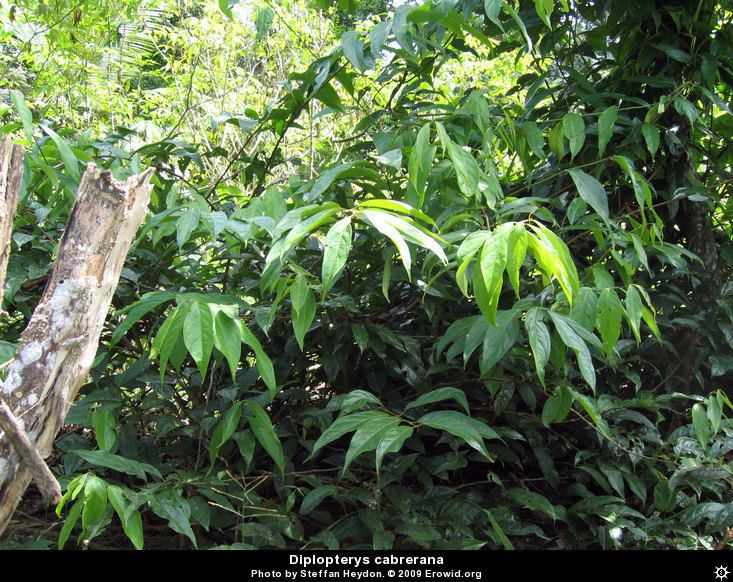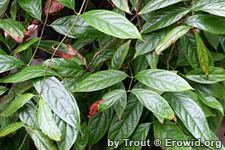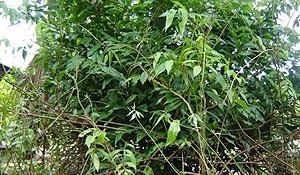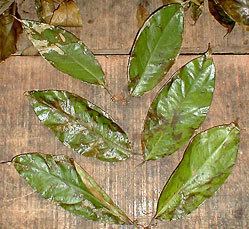Rank Species | Genus Diplopterys Higher classification Diplopterys | |
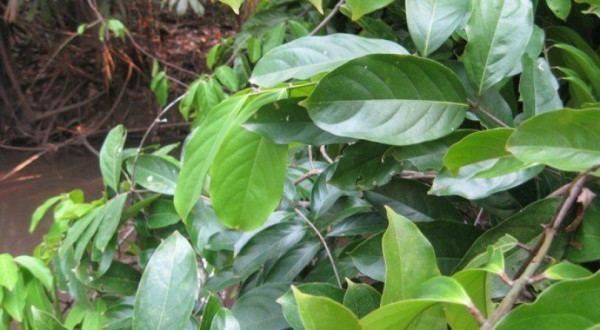 | ||
Similar Psychotria, Psychotria viridis, Banisteriopsis caapi | ||
Diplopterys cabrerana is a vine native to the Amazon Basin, spanning the countries of Brazil, Colombia, Ecuador and Peru. In the Quechua languages it is called chaliponga or chagropanga; in parts of Ecuador it is known as chacruna—a name otherwise reserved for Psychotria viridis.
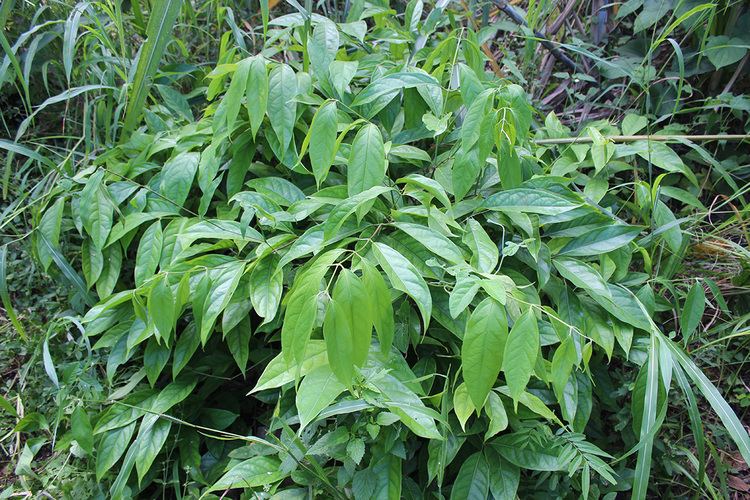
Diplopterys cabrerana plowman
D. cabrerana and P. viridis are both common admixtures for ayahuasca. Both species are rich sources of N,N-DMT, a tryptamine endogenous in humans and many other species. D. cabrerana additionally produces 5-MeO-DMT, a less common structural analog.
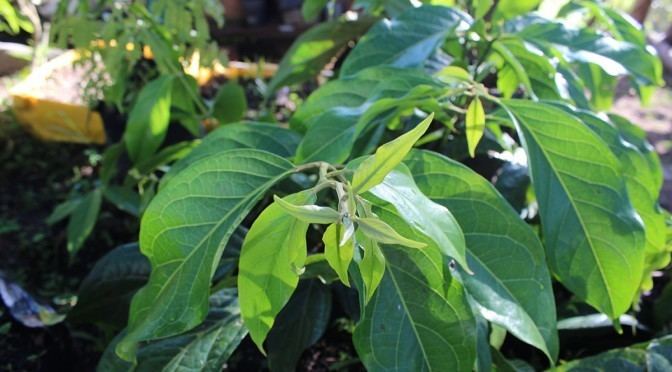
The plant stores the alkaloids N,N-DMT, 5-MeO-DMT, and N-methyltetrahydro-beta-carboline in its leaves and stems. Leaf samples were found to be 0.17-1.75% N,N-DMT, but only trace amounts of N-methyltetrahydro-beta-carboline occur in the leaves. The leaves also store methyltryptamine and trace amounts of bufotenin.
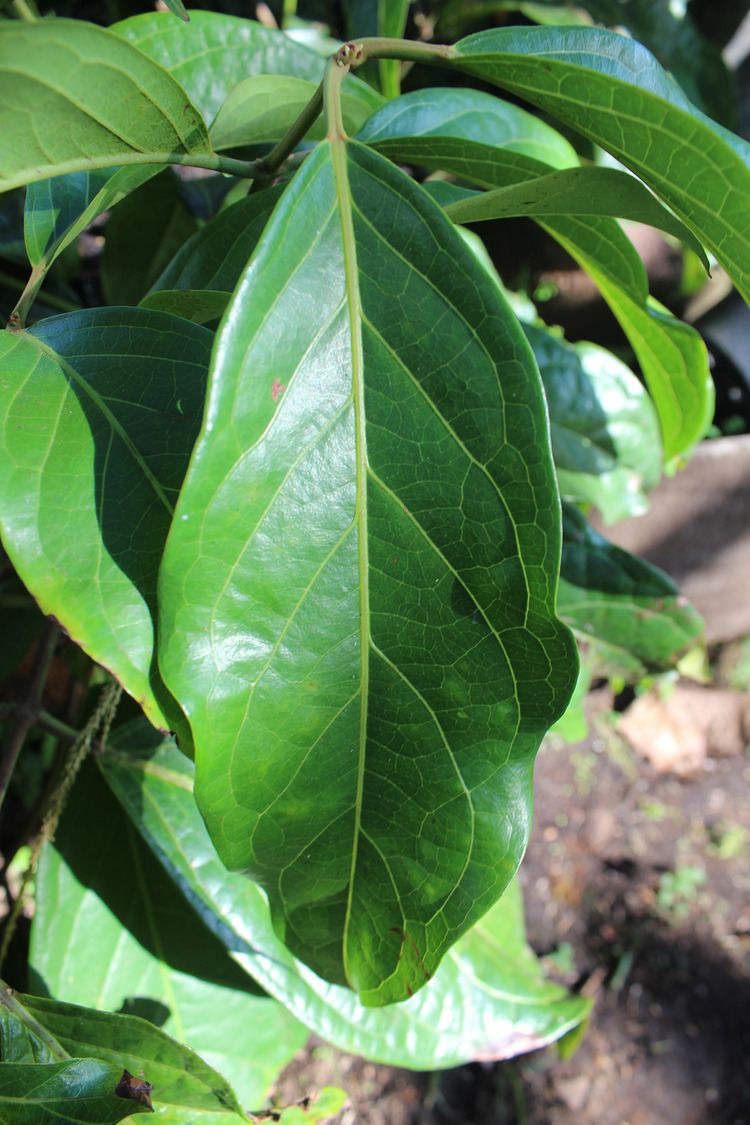
Cuttings from D. cabrerana can be successfully transplanted. These cuttings may be directly planted in soil or initially rooted in water.
